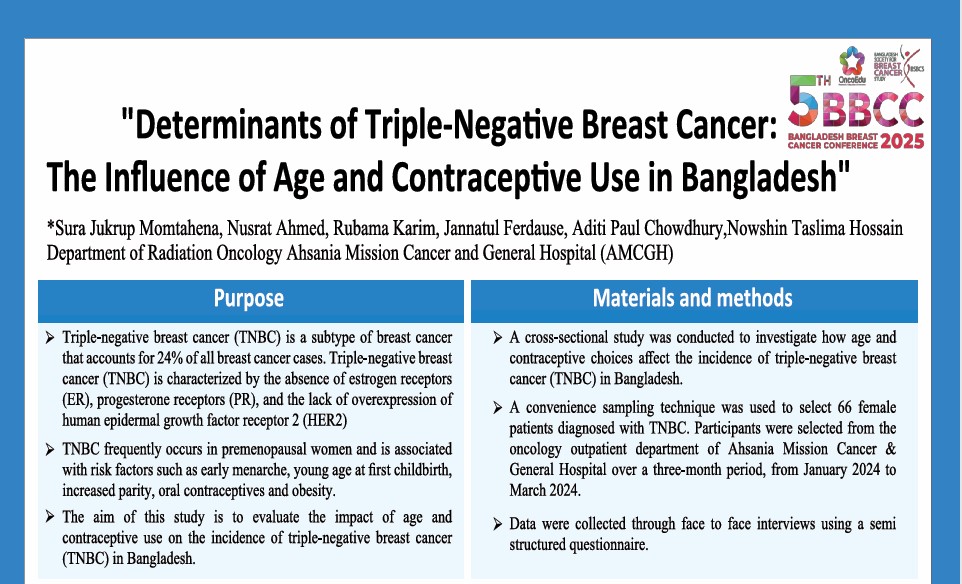Determinants of Triple-Negative Breast Cancer: The Influence of Age and Contraceptive Use in Bangladesh.
Authors: Dr. Sura Jukrup Momtahena
Institution: Ahsania Mission Cancer & General Hospital Uttara
Introduction
Breast cancer is the most common malignancy among women and the second leading cause of cancer-related deaths worldwide TNBC is characterized by the absence of estrogen receptors (ER), progesterone receptors (PR), and human epidermal growth factor receptor 2 (HER2). This lack of receptors makes TNBC resistant to targeted hormonal therapies and HER2-targeted treatments, which are commonly used for other types of breast cancer. As a result, TNBC is often associated with a poorer prognosis and limited treatment options, The epidemiology of TNBC varies significantly across populations, with age, reproductive factors, and contraceptive use playing critical roles in its development. This study aims to evaluate the influence of age, age at marriage, parity, and contraceptive methods on the incidence of TNBC in Bangladesh.
Methods
A cross-sectional study was conducted involving 66 female patients diagnosed with TNBC, selected from the oncology outpatient department of Ahsania Mission Cancer & General Hospital. Data were collected by convenience sampling technique through face-to-face interviews using a semi-structured questionnaire.
Results
The study population comprised 66 women diagnosed with TNBC, with the largest proportion (34.8%) falling within the 31-40 age range, Mean age is 44.9 years. A significant majority of participants were married (77.01%), Muslim (95.5%), and homemakers (87.9%). Educational levels varied, with 37.9% having completed primary education and only 7.6% achieving higher secondary education or above. The mean age at marriage was 17.6 years, with 83.1% marrying before the age of 20.Regarding contraceptive use, 63.6% of patients reported using hormonal contraceptives, with oral contraceptive pills (OCPs) being the most common method. Of these, 42.8% used OCPs for more than 10 years, while 35.7% used them for less than 5 years. The mean duration of OCP use was 7.9 years. The earliest age of first full-term pregnancy was 14 years, and the latest was 32 years, with a mean age of 19.7 years. All participants were parous; 34% had 1-2 children, 43.9% had 3-4 children, and 21% had more than 5 children.
Conclusion
This study highlights the significant influence of age, age at marriage, parity, and contraceptive use on the incidence of TNBC in Bangladesh. These factors should inform public health strategies for early detection and prevention. Further research is essential to understand these risk factors better and develop targeted interventions for at-risk women.
